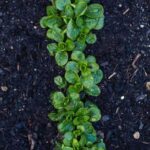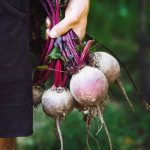Are you interested in starting a vegetable garden in Southern California? Look no further. Welcome to our Southern California Vegetable Gardening Blog, where we provide all the information and resources you need to make your garden thrive in this unique climate. From choosing the right vegetables to managing pests and diseases, we’ve got you covered.
Southern California is known for its warm Mediterranean climate, which creates an ideal environment for growing a wide variety of vegetables. However, the region also presents its own set of challenges when it comes to gardening, including specific soil considerations and water management strategies. In this blog, we will explore these factors and provide valuable insights on how to navigate them successfully.
Whether you are a seasoned gardener or a novice, our blog aims to help you make the most out of your Southern California vegetable garden. We will discuss the best vegetables to grow in this region, offer tips for successful seed starting, and provide guidance on watering and irrigation techniques. Join us as we delve into the world of vegetable gardening in Southern California and discover the abundance of community resources available for aspiring gardeners like yourself.
Climate and Soil Considerations for Southern California Vegetable Gardening
Southern California’s unique climate and soil conditions present both opportunities and challenges for vegetable gardening enthusiasts. The region typically experiences hot, dry summers with mild, wet winters, making it suitable for a wide variety of crops. However, the notoriously rocky and sandy soil can pose difficulties for gardeners looking to grow a successful harvest.
When it comes to climate considerations, Southern California gardeners must be mindful of the potential for extreme heat and drought conditions. Choosing heat-tolerant and drought-resistant vegetable varieties is essential for ensuring a successful harvest in this environment. Additionally, timing is crucial-planting schedules should be adjusted to take advantage of the cooler winter months and avoid scorching summer temperatures.
In terms of soil considerations, Southern California gardeners often face the challenge of working with nutrient-poor, fast-draining soils. To address this issue, incorporating organic matter such as compost or well-rotted manure into the soil can improve its fertility and water retention capabilities. Raised beds can also be an effective strategy for creating optimal growing conditions for vegetables in this region.
| Climate Considerations | Soil Considerations |
|---|---|
| Extreme heat and drought conditions | Nutrient-poor, fast-draining soils |
| Heat-tolerant and drought-resistant vegetable varieties | Incorporating organic matter such as compost or well-rotted manure |
| Adjusting planting schedules | Raised beds for improved growing conditions |
Best Vegetables to Grow in Southern California
When it comes to vegetable gardening in Southern California, the region’s unique climate and soil conditions present both opportunities and challenges. With a long growing season, mild winters, and plenty of sunshine, Southern California is an ideal environment for growing a wide variety of vegetables.
However, the hot, dry summers and occasional Santa Ana winds can also pose some difficulties for gardeners. In this section, we will explore the best vegetables to grow in Southern California and provide some tips for successful cultivation.
Warm-Season Vegetables
Southern California’s warm climate makes it perfect for growing heat-loving vegetables such as tomatoes, peppers, eggplant, squash, cucumbers, and melons. These crops thrive in the long days of sunshine and warm temperatures that are characteristic of the region’s summers. When selecting varieties to plant, be sure to choose those that are well-suited to the specific microclimate of your garden. For example, coastal areas may have different needs than inland valleys.
Cool-Season Vegetables
In addition to warm-season vegetables, Southern California gardeners can also enjoy a long cool-season that allows for growing a variety of cool-weather crops. Leafy greens like lettuce, kale, and spinach do well in the region’s mild winters.
Root vegetables such as carrots, beets, radishes, and turnips are also well-suited to the cooler months. It’s important to pay attention to planting dates and understand when each crop should be started in order to maximize their growth potential.
Herbs
In addition to traditional vegetables, herbs are also excellent choices for Southern California gardens. Culinary herbs like basil, oregano, thyme, and rosemary thrive in the region’s Mediterranean climate. Their aromatic foliage adds flavor to meals while attracting beneficial insects to the garden. Growing herbs can also help support pollinators and contribute to overall garden health.
By focusing on these recommended vegetables and herbs for your Southern California vegetable garden you’ll be on your way towards a thriving harvest.
Tips for Successful Seed Starting in Southern California
Starting your vegetable garden from seeds in Southern California can be a rewarding and cost-effective way to grow your own produce. However, the unique climate and soil conditions of the region require specific considerations for successful seed starting. Here are some tips to help you get started:
- Choose the Right Seeds: Selecting seeds that are well-suited for the Southern California climate is crucial for successful seed starting. Look for varieties that are known to thrive in warm weather and have a shorter growing season.
- Provide Adequate Light: Once your seeds have sprouted, they will need plenty of sunlight to grow into healthy seedlings. Make sure they receive at least 6-8 hours of direct sunlight each day, either outdoors or under grow lights indoors.
- Start Indoors if Needed: In some parts of Southern California, extreme heat or cold temperatures can make it challenging to start seeds directly outdoors. Starting your seeds indoors and then transplanting them outside once they have established strong roots can be a good strategy.
In addition to these tips, it’s important to consider appropriate watering and fertilizing practices for your seedlings. Overwatering can lead to damping off, a common fungal disease that affects young seedlings, while under-watering can result in stunted growth or wilting. Likewise, providing balanced nutrients through organic fertilizers or compost tea can help your seedlings thrive.
By following these tips and staying informed about the best practices for seed starting in Southern California, you can set yourself up for a successful growing season and enjoy a bountiful harvest of homegrown vegetables. For more detailed information on successful seed starting in Southern California, be sure to check out our southern california vegetable gardening blog for expert advice and tips from local gardeners.
Pest and Disease Management for Southern California Vegetable Gardens
When it comes to maintaining a healthy and thriving vegetable garden in Southern California, it is crucial to address pest and disease management. The warm and dry climate in this region can create optimal conditions for pests and diseases to thrive, making it essential for gardeners to be proactive in their approach to prevent and manage these issues.
To mitigate the risk of pest infestations, consider incorporating companion planting in your vegetable garden. Some plants naturally repel pests, while others attract beneficial insects that help control pest populations. For example, planting marigolds can deter nematodes, while attracting ladybugs that feed on aphids. Additionally, rotating crops each season can help disrupt pest life cycles and reduce the likelihood of infestations.
In terms of disease management, practicing good garden hygiene is key. This includes regularly removing any diseased plant material from the garden, as well as properly disposing of it to prevent the spread of pathogens. Additionally, providing adequate spacing between plants can improve air circulation and reduce the risk of fungal diseases.
Furthermore, staying informed about common pests and diseases affecting vegetable gardens in Southern California is essential. By regularly checking in with a reputable southern california vegetable gardening blog or local agricultural extension services, gardeners can stay up-to-date on emerging issues and effective management strategies.
| Pest & Disease Management Techniques | Companion Planting Options |
|---|---|
| Regularly inspecting plants for signs of infestation or disease | Marigolds to deter nematodes |
| Practicing crop rotation to disrupt pest life cycles | Lavender to repel mosquitoes |
| Maintaining good garden hygiene by removing diseased plant material | Basil to attract beneficial insects such as bees |
Watering and Irrigation Strategies for Southern California Vegetable Gardens
When it comes to successful vegetable gardening in Southern California, proper watering and irrigation strategies are crucial for ensuring healthy and productive plants. The region’s semi-arid Mediterranean climate, characterized by hot, dry summers and mild, wet winters, presents unique challenges for gardeners. By implementing the right watering techniques and irrigation methods, you can help your vegetable garden thrive despite the challenging conditions.
To ensure that your vegetables receive the optimal amount of water, consider the following strategies:
- Use drip irrigation: Drip irrigation systems deliver water directly to the base of plants, minimizing evaporation and water waste. This method is especially beneficial in Southern California’s arid climate.
- Install a rainwater harvesting system: Given the limited rainfall in Southern California, collecting rainwater can provide a valuable supplementary water source for your vegetable garden.
- Implement mulching: Mulching helps retain soil moisture by reducing evaporation and regulating soil temperature. Organic mulch such as straw or wood chips can be particularly effective for vegetable gardens.
In addition to these strategies, it’s essential to adjust your watering schedule according to the specific needs of different vegetables. While some crops may require frequent watering, others are more drought-tolerant. By understanding the water requirements of each plant in your garden, you can tailor your irrigation efforts accordingly.
By utilizing these watering and irrigation strategies in your Southern California vegetable garden, you can help conserve water while promoting healthy growth and high yields. For further guidance on this topic and other aspects of vegetable gardening in the region, consider seeking advice from reputable sources such as a Southern California vegetable gardening blog or community resources.
Community Resources for Southern California Vegetable Gardeners
Living in Southern California and maintaining a successful vegetable garden can be an exciting and fulfilling endeavor. However, it can also present unique challenges due to the region’s specific climate and soil conditions. Fortunately, there are numerous community resources available to help both novice and experienced gardeners alike achieve success in their vegetable gardens.
Local Gardening Clubs and Organizations
One valuable resource for Southern California vegetable gardeners is the abundance of local gardening clubs and organizations. These groups often offer educational meetings, workshops, and events focused on vegetable gardening in the region. Connecting with other like-minded individuals can provide access to a wealth of knowledge and experience, as well as the opportunity to network with fellow gardeners.
Extension Services
Another invaluable resource for Southern California vegetable gardeners is the cooperative extension services offered by universities such as UC Davis and UC Riverside. These services provide research-based information, workshops, publications, and master gardener programs specifically tailored to the unique challenges of gardening in Southern California. By taking advantage of these resources, gardeners can stay informed about best practices, pest management strategies, and soil improvement techniques.
Online Communities
In this digital age, online communities have become an essential resource for many Southern California vegetable gardeners. Joining forums or social media groups dedicated to vegetable gardening in the region can provide access to a vast network of growers willing to share tips, tricks, and advice. Additionally, many bloggers maintain Southern California vegetable gardening blogs that offer valuable insights based on their own experiences cultivating produce in the area.
By tapping into these community resources for Southern California vegetable gardeners, individuals can enhance their gardening knowledge, connect with other enthusiasts, and ultimately increase their chances of cultivating a successful and bountiful harvest. Whether seeking guidance on climate-specific planting schedules or simply looking for a supportive community of fellow gardeners, these resources are indispensable tools for anyone passionate about growing vegetables in Southern California.
Harvesting and Preserving Your Southern California Vegetable Garden Bounty
In conclusion, Southern California offers a unique and favorable climate for vegetable gardening, allowing gardeners to enjoy a wide variety of crops throughout the year. With the right knowledge and resources, anyone can create a successful vegetable garden in this region. From understanding the climate and soil considerations to effectively managing pests and diseases, there are many factors to consider when embarking on your gardening journey.
As discussed in this blog, there are several best practices to keep in mind when it comes to harvesting and preserving your bounty. Proper harvesting techniques ensure that you get the most out of your crops while preserving methods such as canning, freezing, or drying allow you to enjoy your harvest long after the growing season has passed.
It’s important to take advantage of community resources such as local gardening clubs or farmers’ markets for guidance and support from fellow gardeners.
In summary, with the right tools and knowledge at your disposal, successful vegetable gardening in Southern California is within reach for anyone. By following the tips and recommendations outlined in this blog, you can cultivate a bountiful garden that will provide fresh produce for your family year-round.
Keep exploring, learning, and experimenting with different vegetables to truly make the most of what this region has to offer for vegetable gardeners. And always remember that you’re not alone on this gardening journey – there’s a whole community out there ready to help and inspire you along the way.
Frequently Asked Questions
When Should I Start My Vegetable Garden in Southern California?
In Southern California, the best time to start your vegetable garden is in late winter or early spring. This allows for the soil to warm up and provides a longer growing season for most vegetables.
Is It Legal to Grow Your Own Vegetables in California?
Yes, it is legal to grow your own vegetables in California, as long as you are not violating any local zoning laws or regulations. It’s always a good idea to check with your local government for any specific rules or restrictions.
What Vegetables Can You Grow Year Round in California?
California’s mild climate allows for year-round vegetable gardening in many areas. Some vegetables that can be grown year round in California include leafy greens like lettuce and spinach, root vegetables like carrots and radishes, and herbs such as rosemary and thyme. It’s important to consider your specific microclimate when planning your year-round garden.

If you’re looking to get into vegetable gardening, or are just looking for some tips on how to make your current garden better, then you’ve come to the right place! My name is Ethel and I have been gardening for years. In this blog, I’m going to share with you some of my best tips on how to create a successful vegetable garden.





